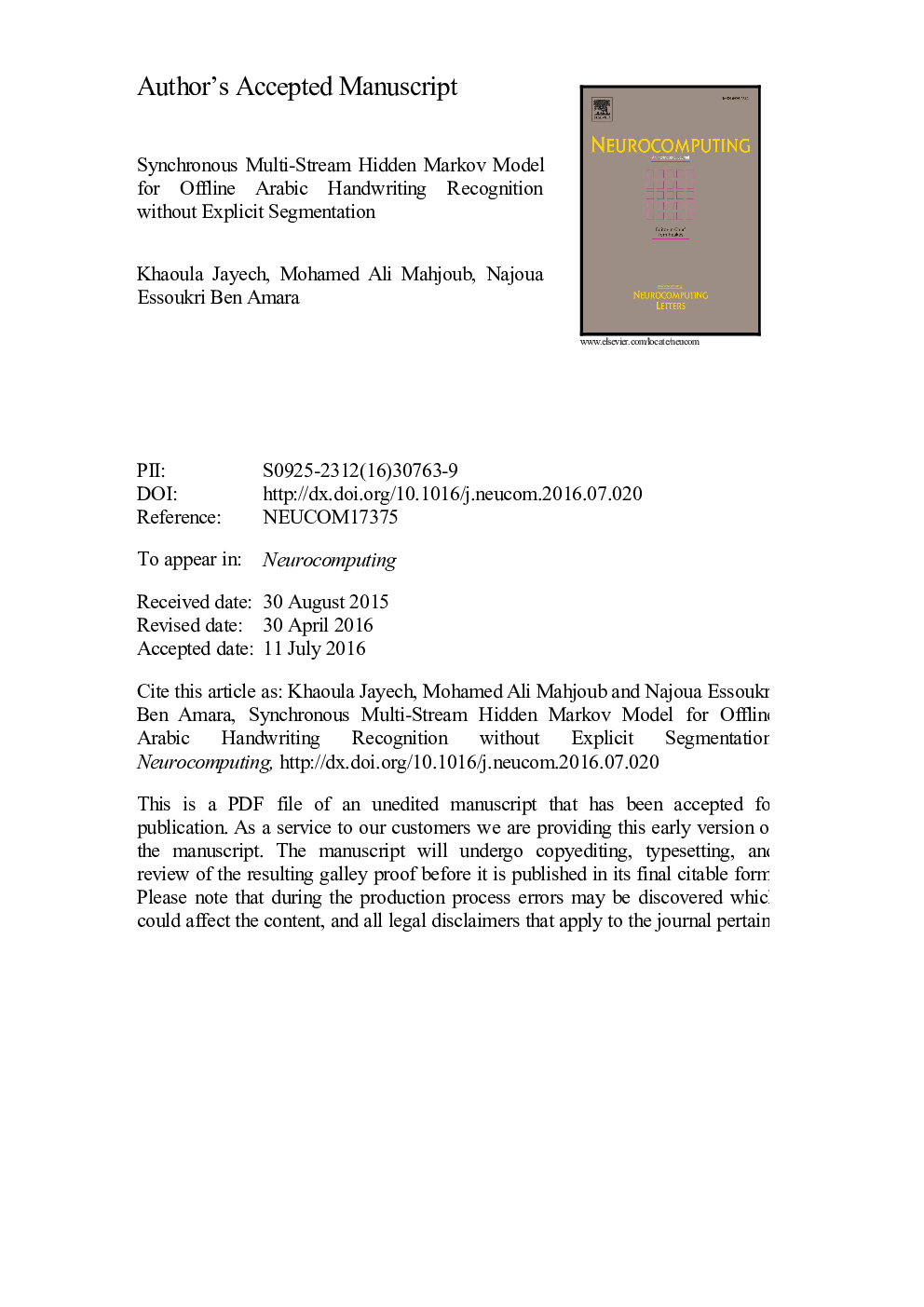| کد مقاله | کد نشریه | سال انتشار | مقاله انگلیسی | نسخه تمام متن |
|---|---|---|---|---|
| 4948491 | 1439613 | 2016 | 32 صفحه PDF | دانلود رایگان |
عنوان انگلیسی مقاله ISI
Synchronous Multi-Stream Hidden Markov Model for offline Arabic handwriting recognition without explicit segmentation
ترجمه فارسی عنوان
مدل مارکف پنهان چندین جریان همزمان برای به رسمیت شناختن دست خط عربی بدون تفکیک صریح
دانلود مقاله + سفارش ترجمه
دانلود مقاله ISI انگلیسی
رایگان برای ایرانیان
کلمات کلیدی
مدل مارکف پنهان چند جریان تقسیم بندی نامعلوم، تشخیص دست خط عربی شبکه بیسیم پویا،
موضوعات مرتبط
مهندسی و علوم پایه
مهندسی کامپیوتر
هوش مصنوعی
چکیده انگلیسی
Arabic handwriting recognition is still a challenging task due especially to the unlimited variation in human handwriting, the large variety of Arabic character shapes, the presence of ligature between characters and overlapping of the components. In this paper, we propose an offline Arabic-handwritten recognition system for Tunisian city names. A review of the literature shows that the Hidden Markov Model (HMM) adopting the sliding window approach are the mainly used models, which gives good results when a relevant feature-extraction process is performed. However, these models are utilized especially to model one dimensional signal. Consequently, to model bi-dimensional signals or multiple features, a solution based on combining multi-classifiers and then a post-treatment selecting the best hypothesis is applied. The problem considered in this case consists in searching the best way to combine the contribution of these classifiers. In this study, we put forward an extension of the HMM, which can surmount this problem. Our proposed system is based on a synchronous multi-stream HMM which has the advantage of efficiently modelling the interaction between multiple features. These features are composed of a combination of statistical and structural ones, which are extracted over the columns and rows using a sliding window approach. In fact, two word models are implemented based on the holistic and analytical approaches without any explicit segmentation. In the first approach, all the classes share the same architecture nevertheless, the parameters are different. In the second approach, each class has its own model by concatenating their components models. The results carried out on the IFN/ENIT database show that the analytical approach performs better than the holistic one and that the data fusion model is more efficient than the state fusion model.
ناشر
Database: Elsevier - ScienceDirect (ساینس دایرکت)
Journal: Neurocomputing - Volume 214, 19 November 2016, Pages 958-971
Journal: Neurocomputing - Volume 214, 19 November 2016, Pages 958-971
نویسندگان
Khaoula Jayech, Mohamed Ali Mahjoub, Najoua Essoukri Ben Amara,
